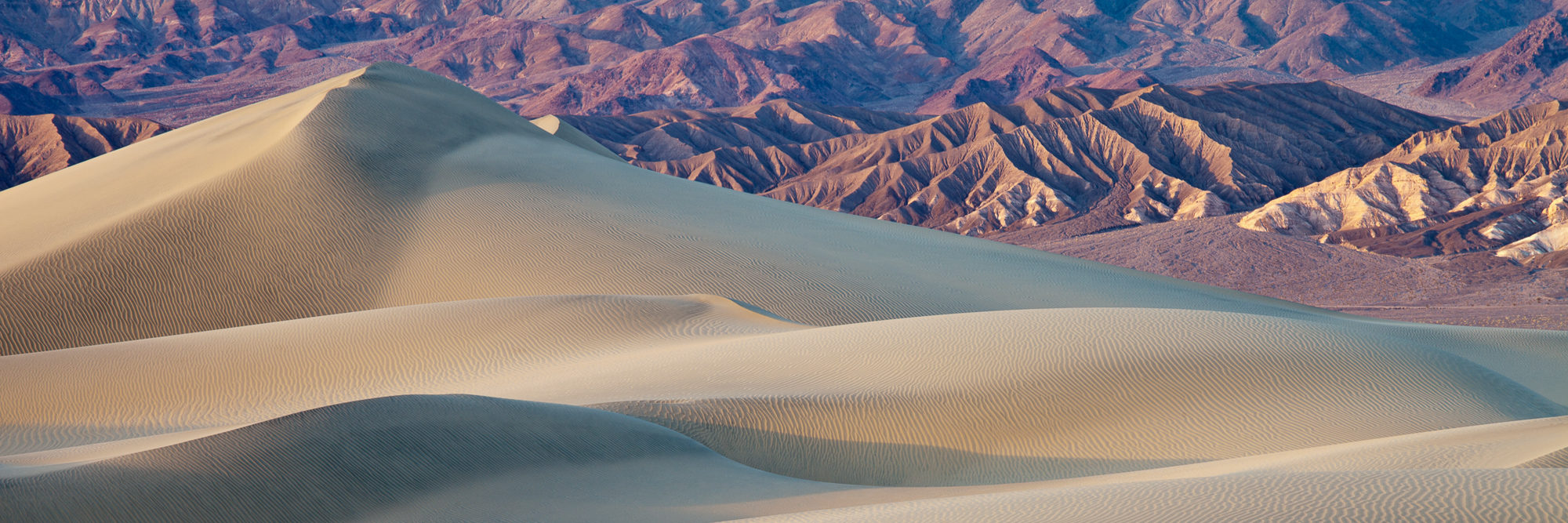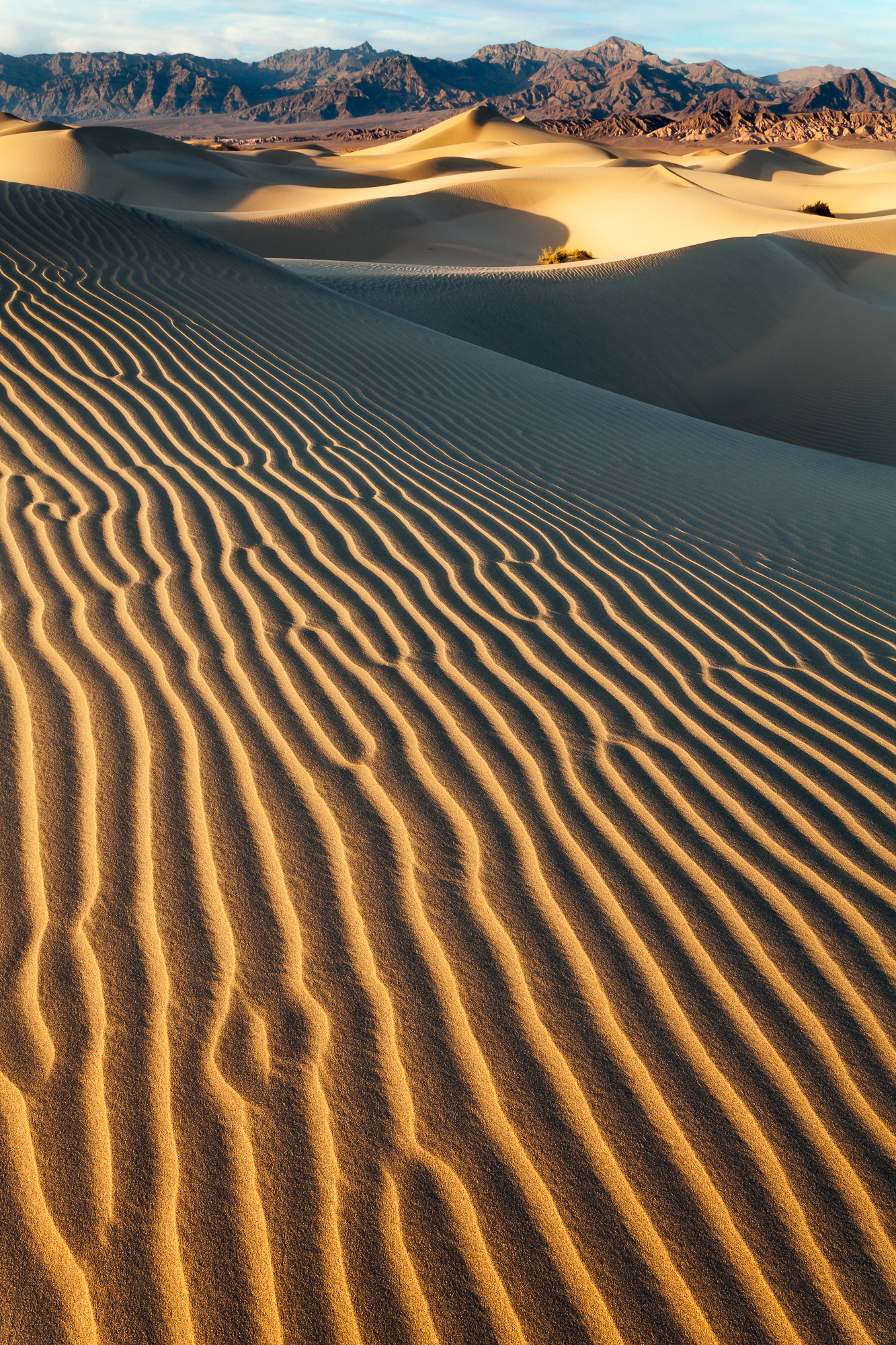
I just spent a week in Death Valley National Park attending a workshop with landscape photographer Jack Dykinga. It was an amazing week catching up with old friends, doing a ton of field work, and trying to soak in Jack’s incredible talent whenever possible. One of my favorite places to shoot was the sand dunes of Mesquite Flat, just north of Stovepipe Wells.
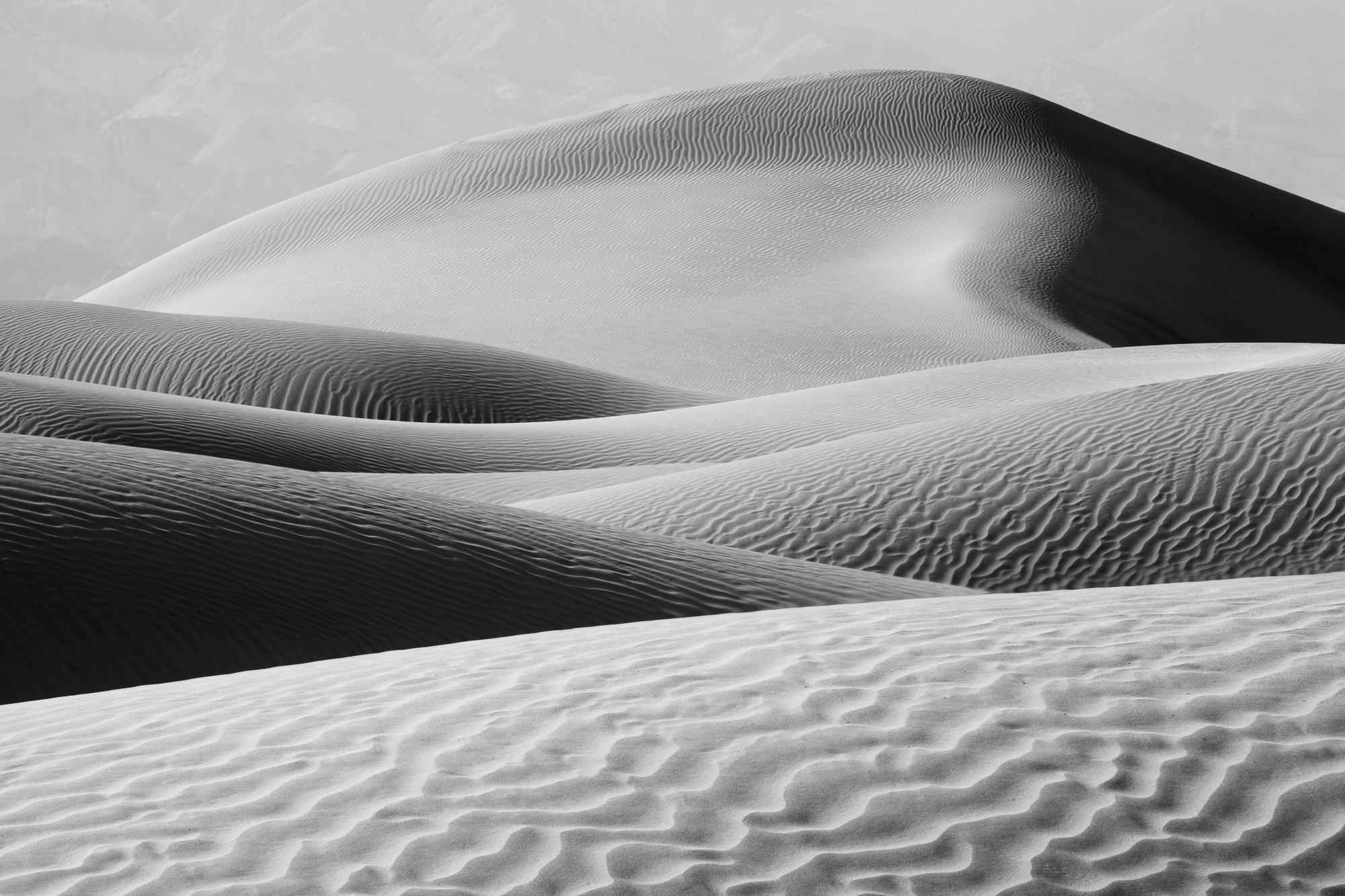
The dunes provided an amazing array of shapes and pattern with which to craft photographs. It was a place that really clicked for me, and it was a joy to shoot. An hour or two before sunset, the sun was still high enough to provide strong shadows and side lighting.
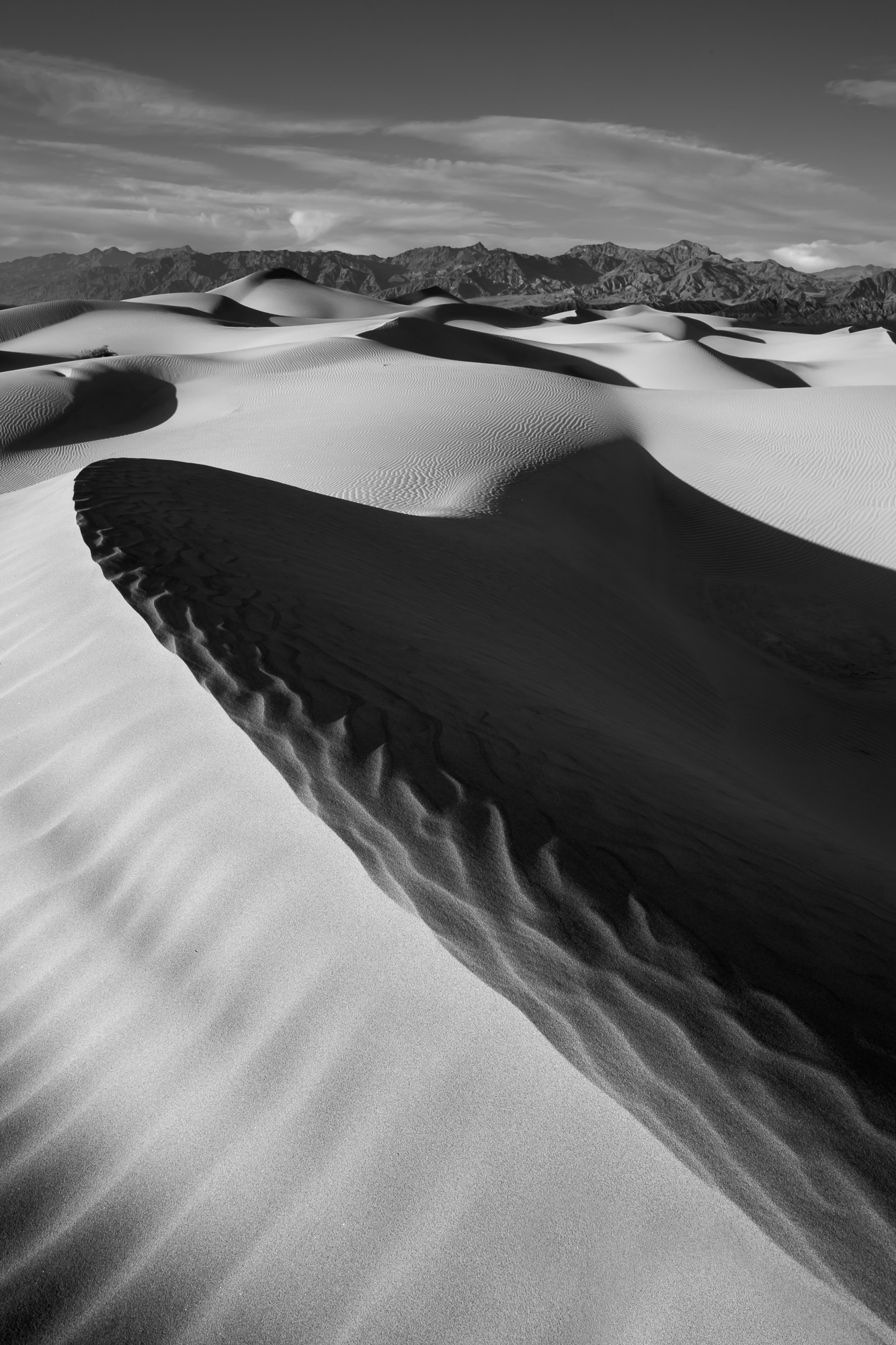
At this time of the day, I really wanted to capture strong contrast which let the eye see the huge variety of patterns in the sand.
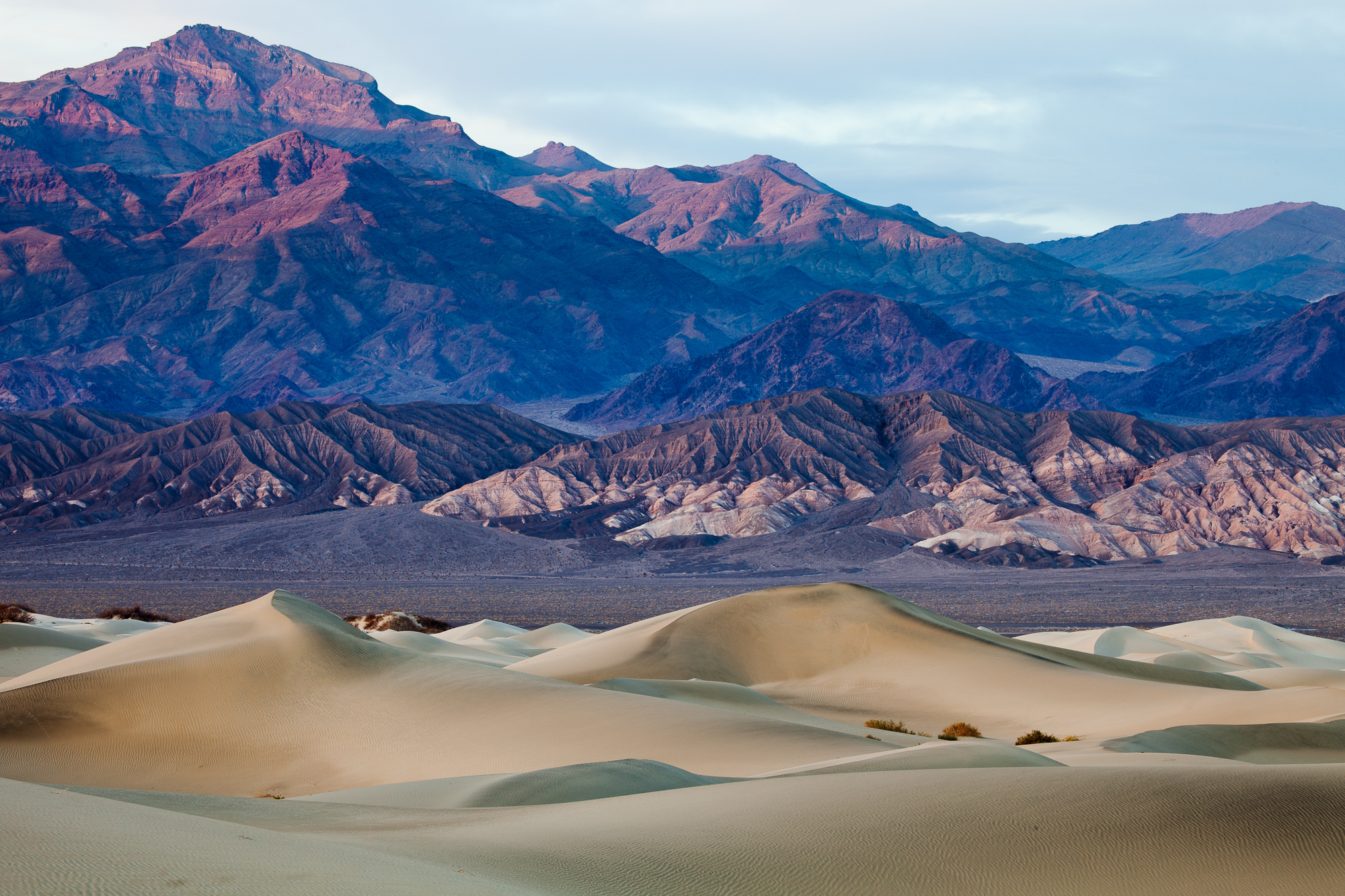
As we got closer to sunset, the dunes and mountains to the east began to reflect that sweet magic hour light. Using a longer lens to stack the dunes against the mountains helps to give the viewer a sense of place.
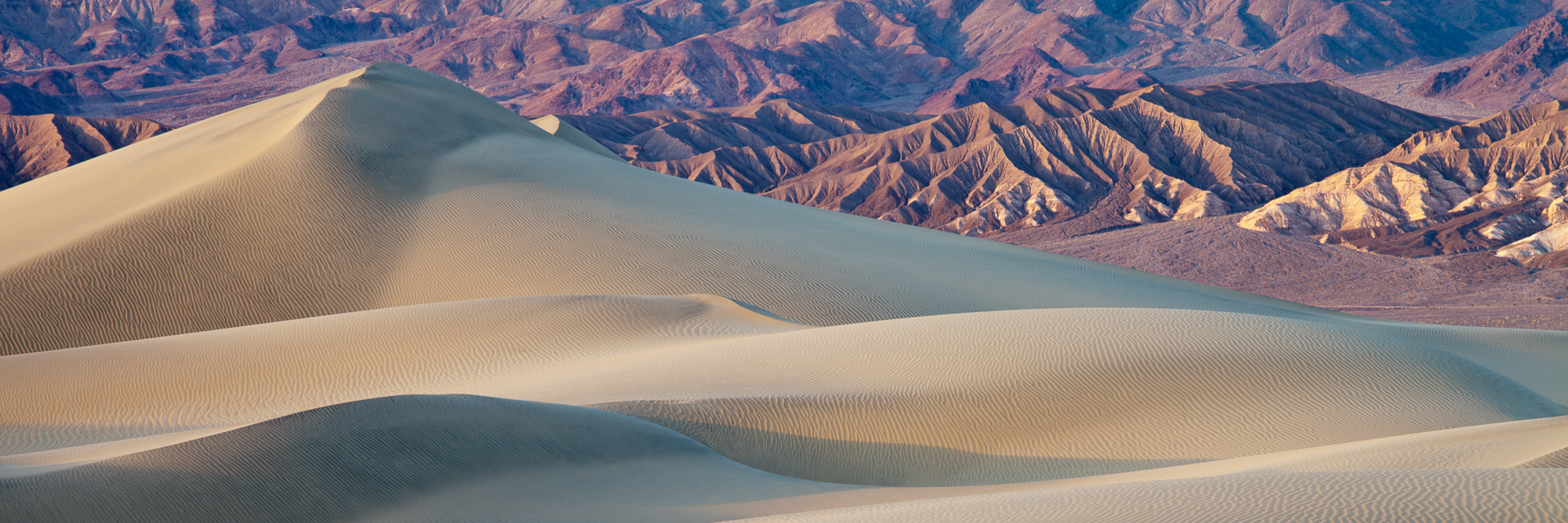
My favorite time of day to shoot however, was after the sun had set. The light across the dunes evened out, filling in the shadows and giving the dune contours a milky softness.
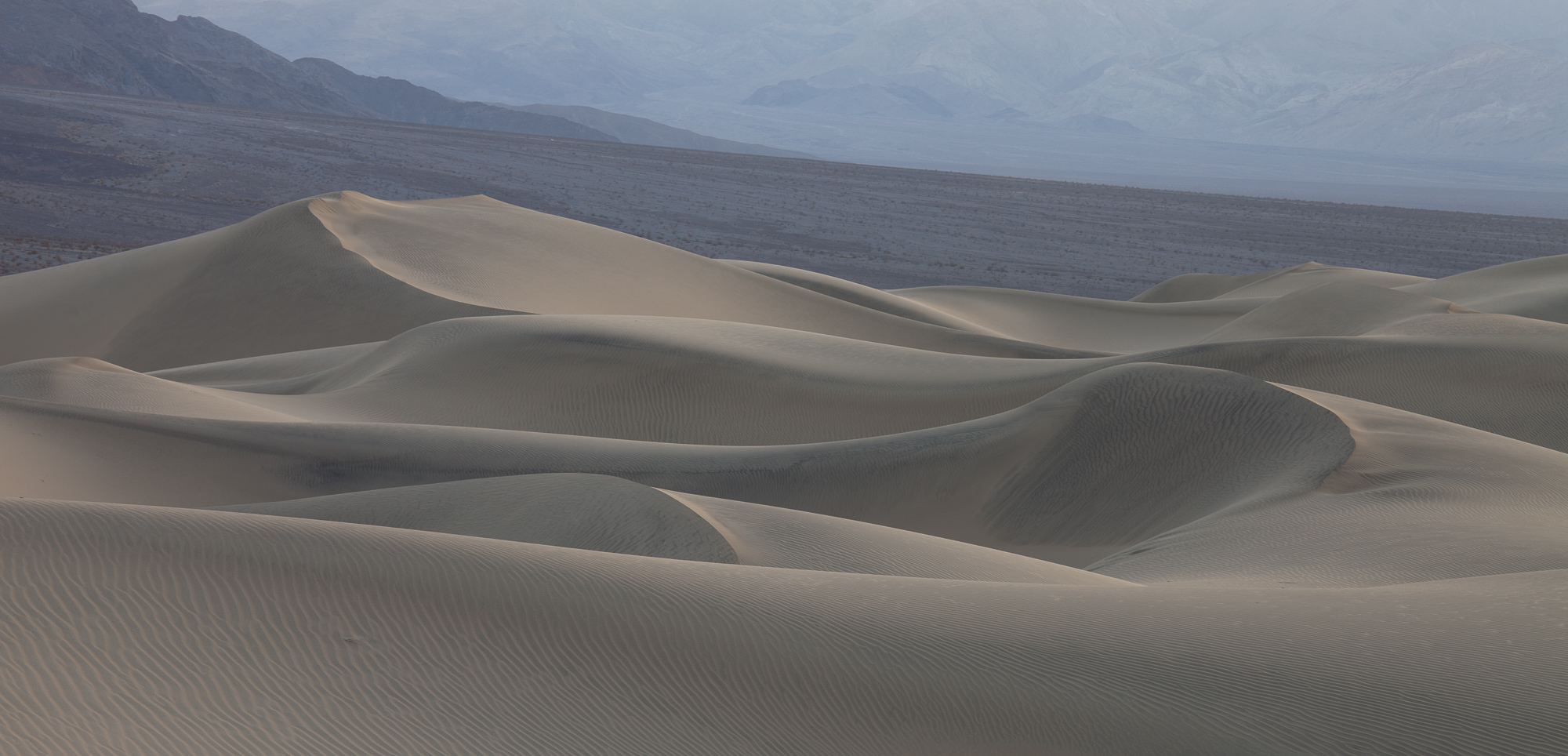
Black and white photos still worked well in this light. Instead of cranking up the contrast to show those sharp lines, the key here was to keep it soft and lower contrast. I tried to find compositions that allowed the eye to move easily up into the frame, flowing through the dunes.
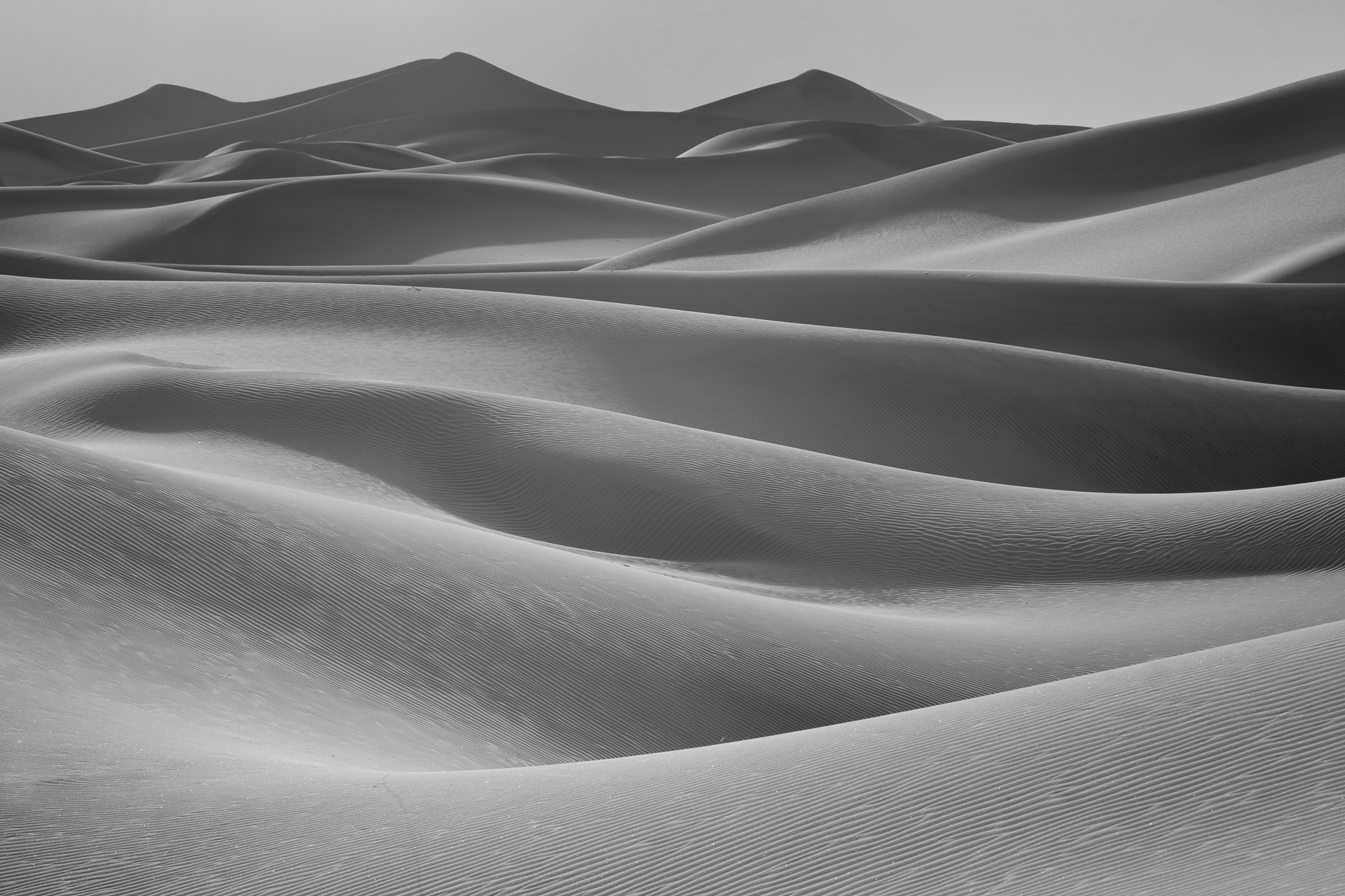
As the valley settled into shadow, the sand was cast in a cool blue light.
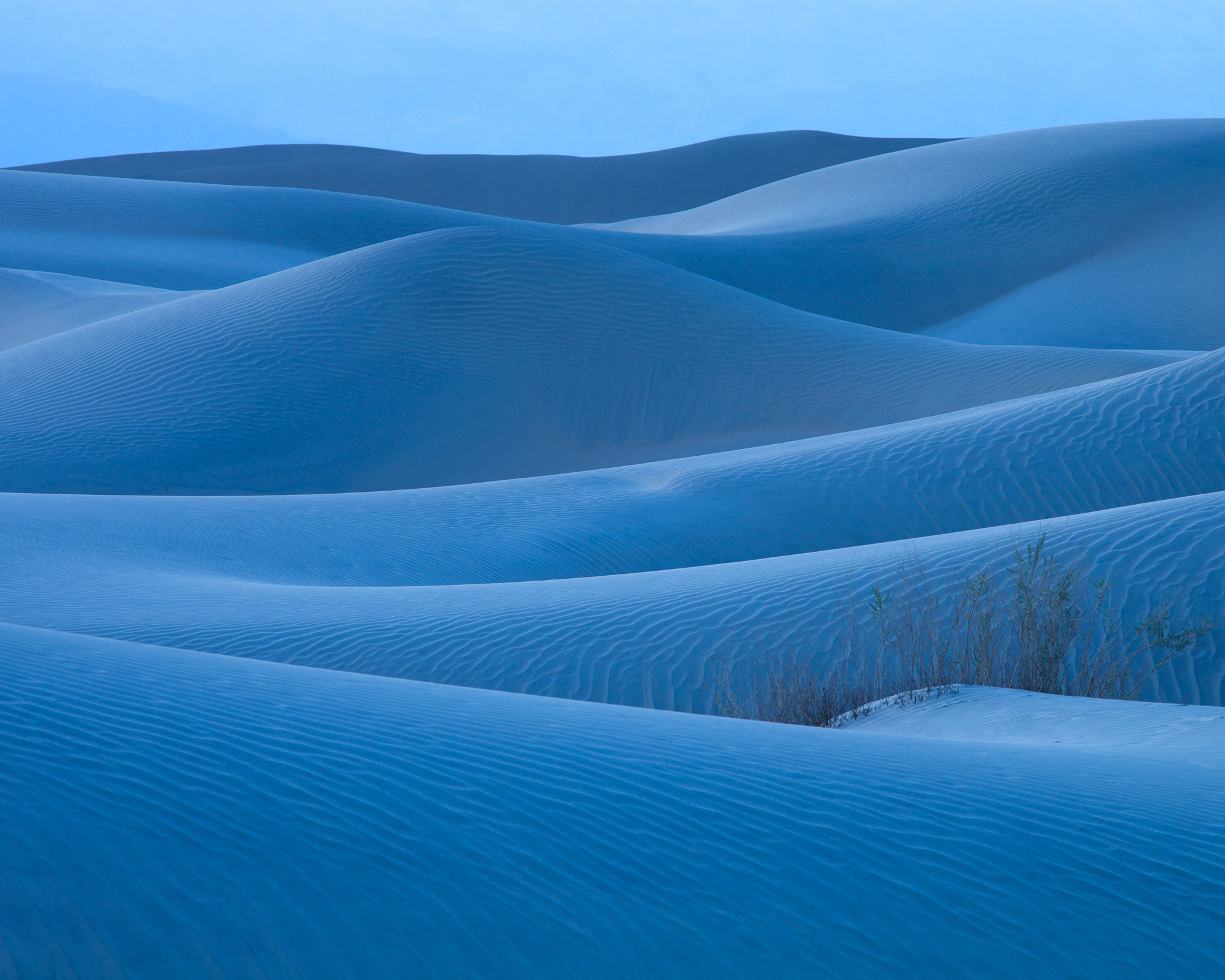
As I had never spent much time photographing sand dunes before, I was thrilled with the experience. It is definitely a subject that offers endless variety and continual learning. These are my favorite kinds of photographic subjects – challenging and varied, forcing me to adapt and grow.
If you are serious about your photography and want to learn from one of the masters, I highly recommend putting Jack on your short list of workshop instructors.

